Simplify your marketing automation strategy. Use AI to personalize campaigns, optimize workflows, and turn data into actionable insights effortlessly.
Read More »
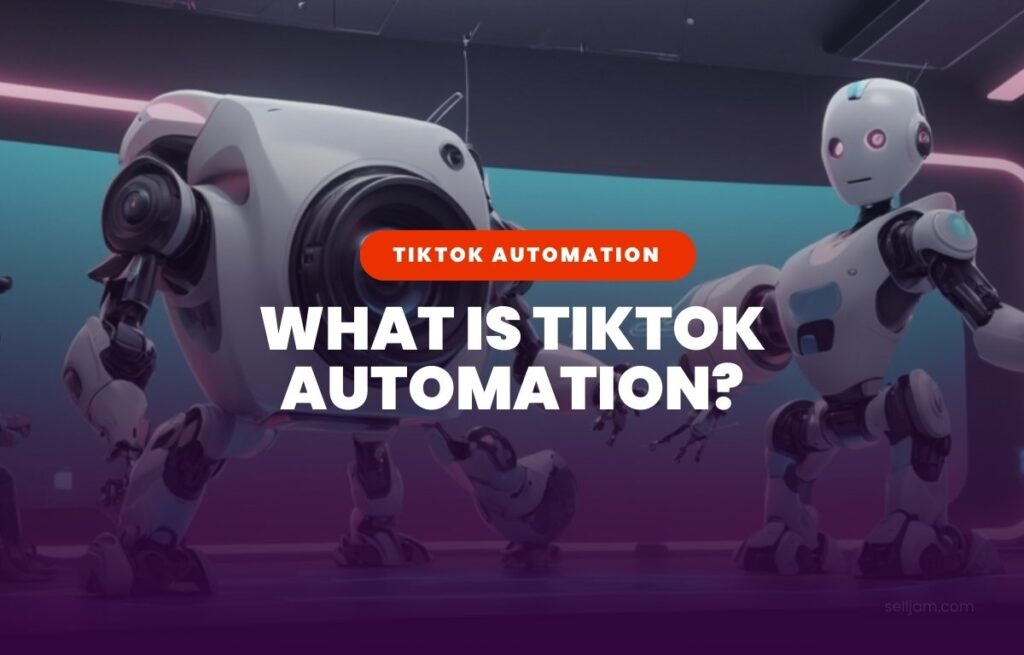
Not everyone wants to be the next TikTok sensation, and that’s okay! For business owners, the real goal is often simpler — growing your audience, building your brand, and driving sales.
TikTok can be an effective channel not just for reaching potential customers or clients, it can also help turn views and likes into real sales and inquiries for your business.
Between brainstorming ideas, creating content, and posting regularly, creating TikTok videos can feel like it's taking up all your time. That’s where AI-powered TikTok automation steps in to make your life easier.
TikTok automation doesn’t mean handing everything over to AI. It’s about using smart tools and workflows to handle repetitive tasks like creating scripts, scheduling posts, or generating videos so you can focus on what matters most—being creative and engaging with your audience.

TikTok automation uses AI tools and automated workflows to streamline tasks that would otherwise take up a big chunk of your time. Imagine having a digital assistant that helps you create video content, edit your videos, post at the best times, drafts captions, and even suggests video concepts based on trends. That’s essentially what TikTok automation with AI does.
But automation isn’t just about saving time. With AI automation tools you can scale your creation efforts to create more quality content consistently. With the right tools, you can plan, create, and share content without constantly being glued to your phone or struggling to find the next big idea.

When starting with TikTok automation, think about what you enjoy and excel at—whether it’s being on camera or designing visuals—and let automation handle the rest. Use AI tools to take care of time-consuming tasks like research, script writing, editing, and scheduling, freeing you to focus on creativity. Plan your content using a calendar to balance manual efforts with automation, and start small. Test your process, see what works, and gradually scale up for consistent and effective results.
The first step to a creating a viral TikTok video is finding the right topic and seeing what trends are hot. Using a tool like ViralFindr makes it easy, but for more advanced trend analysis and deep research on a topic you could try AI tools like Perplexity.ai and Gemini Deep Research (a new model inside Gemini ) make this easy by analyzing trends and audience behavior.
For example, Perplexity.ai can quickly uncover trending hashtags or challenges in your niche, while Gemini can dive deeper into audience preferences. Whether it’s #MorningMotivation or a viral dance trend, these tools help you start with a solid foundation.
Once you’ve chosen your topic, tools like ChatGPT or Gemini can help you create an engaging script. Say you want to make a TikTok about “5 Quick Marketing Hacks”—just provide the topic, and ChatGPT can draft a fun and engaging outline. You can even ask it to tailor the tone for your audience, whether casual or professional, ensuring your content is on point.
Below is an example of a prompt to create a viral tiktok video script:
Write a 1-minute script for an educational video that gets straight to the point and is easy to understand. The script should be conversational, with a maximum of 120 words, use plain language and simple terms.
Follow this structure:
- Hook (grab attention right away)
- What they'll gain (the result of applying the solution)
- The solution (what they need to do)
- How to apply it (simple step-by-step)
- Call to action (what’s next?)
- Start the hook with one of these lines:
"Tired of [X]? Here’s the secret behind [Y]"
"Ever wondered how [X] does [Y]?"
"Here’s a hidden blueprint to [X]"
"Here’s an [X] secret you don’t know about"AI can even help you create direct-to-camera clips of yourself without stepping in front of a camera. Tools like HeyGen and Synthesia let you create a digital avatar that looks and sounds like you, or you can use stock AI models to represent your brand. This is a game-changer for tutorials, product demos, or explainer videos, offering a professional, consistent on-screen presence with minimal effort.

For those who prefer traditional filming, AI can still make the process easier. Tools like ShotDeck provide visual inspiration, helping you plan creative shots and angles. For example, if you’re showcasing a product, ShotDeck might suggest a dynamic “before and after” sequence to grab attention. Whether you’re using AI avatars or shooting manually, these tools ensure your video looks polished and professional, even if you’re filming from home.
Editing is where AI truly shines. It's not perfect though but is getting better every few months. Tools like Gling.ai simplify the process by automatically removing pauses/silences, cutting errors, and enhancing quality. Imagine uploading your raw footage and having Gling.ai clean it up, add smooth transitions, and improve the lighting—all in minutes. It’s a game-changer, especially if you’re new to video editing or working with tight schedules.
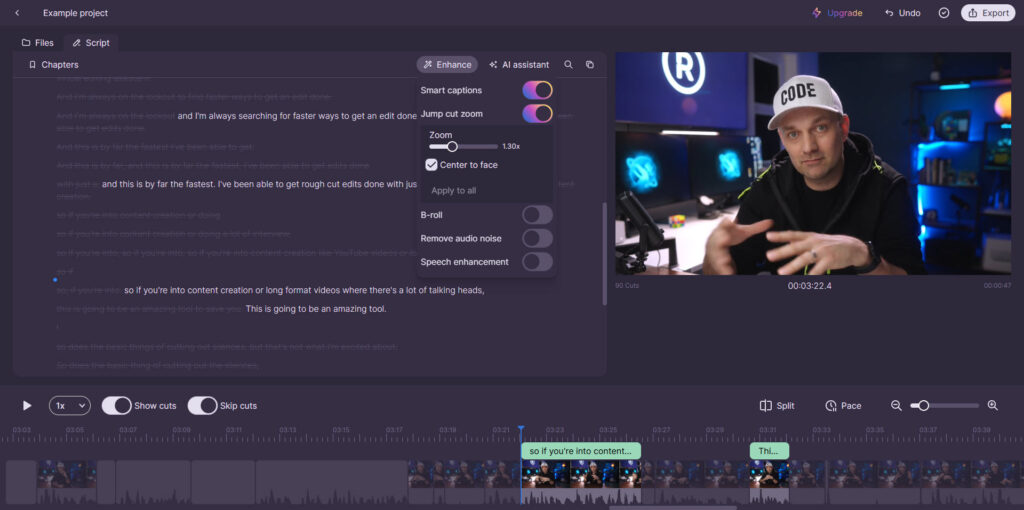
Gling.ai Best Features:
A great voiceover can make your video more engaging, and AI tools like Eleven Labs or HeyGen help you do this at scale or in batches to enhance your editing workflow.
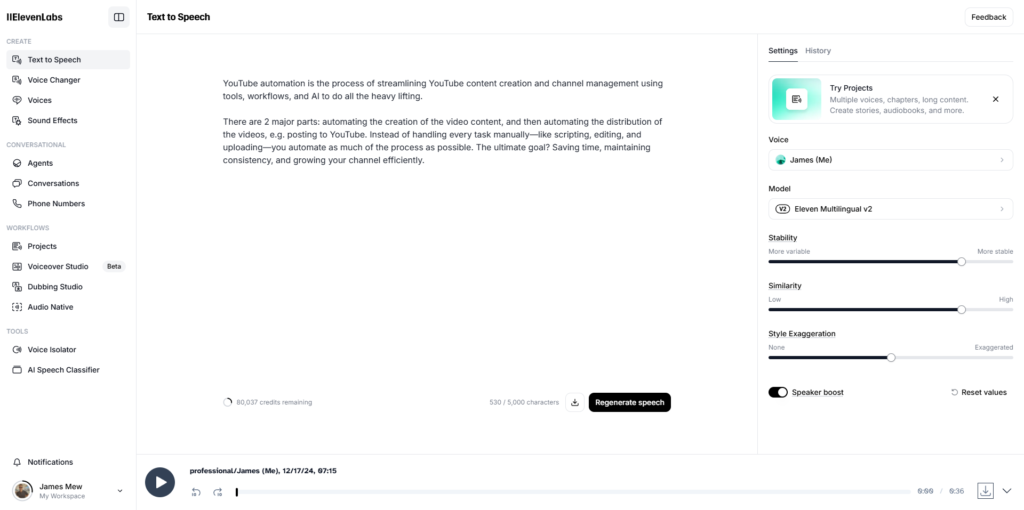
For example, Eleven Labs can create a natural, conversational voiceover to match your video’s tone, while HeyGen is ideal if you want to create multilingual narrations. These tools help you connect with a broader audience without needing to record audio yourself.
With Eleven Labs, I created a voice clone after training the ai model on my voice with only 30 mins of quality audio - this is the minimum they recommend, 2+ hrs is optimal. It sounds like a lot, but it's worth the effort in preparing the audio clips because the quality and the likeness of the generated ai voice clone sounds incredibly real, and it's actually usable. Their ai stock voices are some of the best, so if you don't need your own voice there are plenty of other voices to choose from for you Tiktok videos.
Consistency is key on TikTok, and tools like Metricool.com make it easy to schedule posts at the best times. By analyzing your audience’s activity, Metricool ensures your videos go live when they’re most likely to be seen. For example, it might suggest scheduling your content for 6 PM when engagement peaks, letting you focus on creating instead of posting.
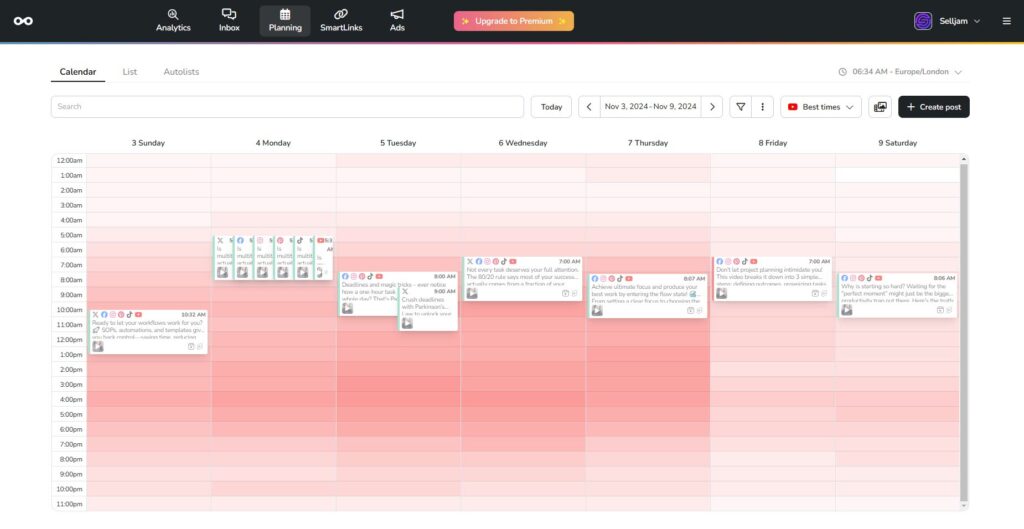
Metricool can also help with hashtags optimization by analyzing trends and recommending the best ones for your niche, ensuring greater reach and engagement.
Once your video is live, maximize its reach by repurposing it into short clips. Tools like Descript and Opus Pro are perfect for this.
Descript’s “underlord feature” identifies the most shareable moments in your video and turns them into multiple TikTok-ready clips. Descript takes it further by letting you edit those clips with text-based tools, ensuring they’re concise and captivating. Repurposing makes it easy to extend the life of your content while reaching new audiences.
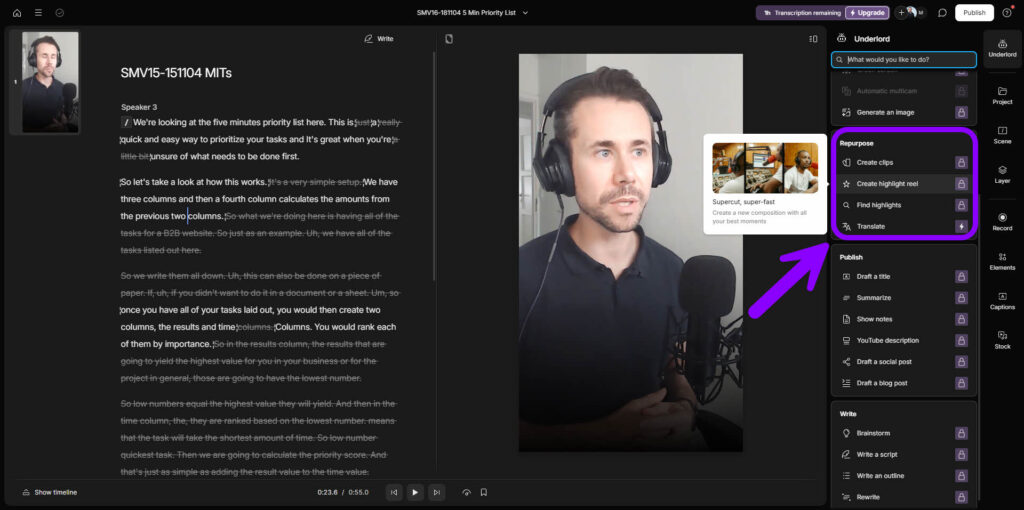
Automation isn’t perfect. Over-reliance can make your content feel impersonal, which is the opposite of what TikTok is all about. Here’s how to use automation wisely:

When creating TikTok videos, one key decision is whether to put yourself in front of the camera or to create faceless content. Both approaches have their strengths and weaknesses, and the choice depends on your goals, audience, and brand identity.
Faceless TikTok Videos
Pros:
Cons:
Face TikTok Videos
Pros:
Cons:
Finding the Right Balance
Use faceless videos for tutorials or educational content, while face videos are better for building personal connections or showcasing authenticity. A mix of both styles can maximize engagement and variety.
What is TikTok Automation?
TikTok automation involves using tools and software to simplify tasks like scheduling posts, engaging with followers, and finding trends. For example, tools like Metricool can help schedule posts while analyzing audience activity to suggest the best posting times.
Does TikTok Automation Really Work?
Yes, when used wisely, TikTok automation can save time and boost efficiency. However, misusing tools—like over-automating engagement—can result in reduced visibility or even account restrictions. For instance, automated comments that feel impersonal may alienate your audience.
What Can Be Automated on TikTok?
Tasks like video editing, script writing, ai talking head shots, scheduling, and engaging with followers (e.g., liking or replying to comments) can all be automated. For example, Gling.ai can handle video edits, while Metricool schedules posts for optimal engagement.
Are There Risks to Using TikTok Automation?
Overusing automation can lead to penalties, loss of authenticity. For instance, relying too heavily on bot-driven engagement may violate TikTok’s terms and result in account suspension.
What Are Some Alternatives to Full Automation?
Semi-automation tools like Hootsuite or Later strike a balance by simplifying content scheduling without compromising authenticity. For example, Later allows you to visually plan your TikTok feed while leaving room for personalized engagement.
Is TikTok Automation AI Free?
Some TikTok automation tools offer free versions with limited features. For example, Metricool provides basic scheduling tools for free, but advanced analytics may require a paid plan.
How to Use AI Voice on TikTok?
Tools like Eleven Labs allow you to use stock AI voices or even create a realistic AI clone of your own voice. For instance, you can upload a short audio sample to Eleven Labs, and it will generate a lifelike replica that you can use in your videos. HeyGen offers the same, although the quality is not a good.
How to Do the AI Voice on TikTok?
That famous AI voice often heard on TikTok comes from Eleven Labs, and the voice model is called "Adam (Legacy)." To use it, upload your text into Eleven Labs, select "Adam (Legacy)," and export the audio for seamless integration into your TikTok videos.
TikTok automation isn’t about replacing you; it’s about helping you by simplifying repetitive or boring tasks. Automation will allow you to scale from creating 2-3 videos a week , to creating 10 or more while still giving consistently good content. The goal is not to remove you from the process, but instead, use AI automation tools to handle the tedious stuff, so you can focus on creative elements and connecting with your audience in an authentic way. This is something AI simply cannot do. Start small by automating one or two tasks, like scheduling posts or researching hashtags, and focus on tools that simplify your workflow. This lets you ease into automation while staying consistent and effective, ensuring your TikTok presence grows steadily.

With 20+ years in eCommerce and a proven history of scaling a 7-figure business, I know how to transform challenges into opportunities for growth. As the former Head of E-commerce for a European food tech company, I managed 14 e-shops across Europe and South Africa. Now, I specialise in helping professionals like you unlock the potential of AI automation for your business.
Over 1,800 students have already enrolled in my online courses to master these skills. Whether you’re looking for hands-on AI automation services or want to upskill with my courses, I’m here to help. Connect with me on LinkedIn to discuss your needs or join my programs to start building smarter, more scalable systems today!
Simplify your marketing automation strategy. Use AI to personalize campaigns, optimize workflows, and turn data into actionable insights effortlessly.
Discover how AI content automation transforms workflows with tools for automatic content creation, saving time while enhancing creativity, efficiency, and scalability.
Master AI Reels automation on Instagram! Explore the best tools and strategies for AI-powered video creation, repurposing content, and scheduling posts to grow your audience fast.